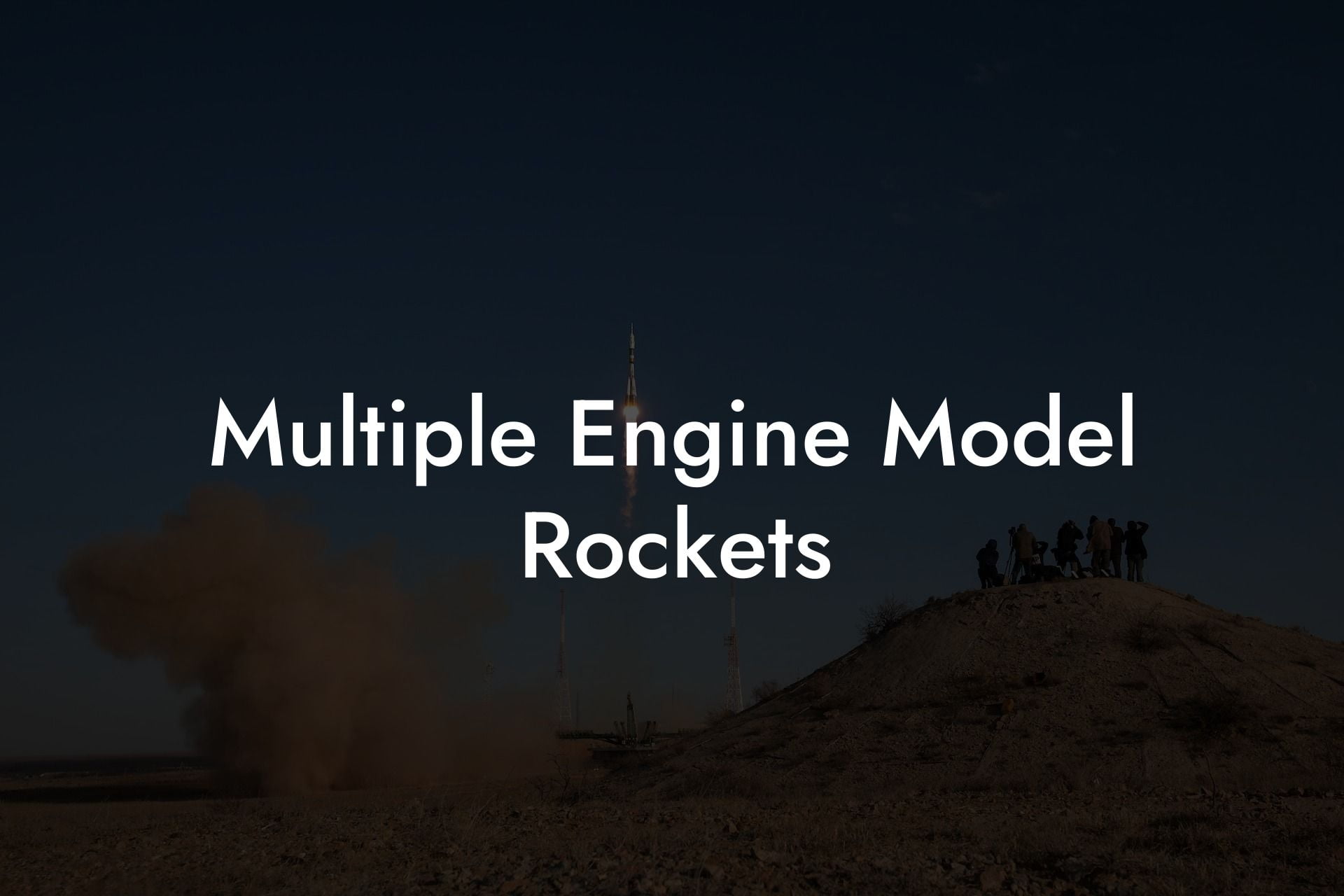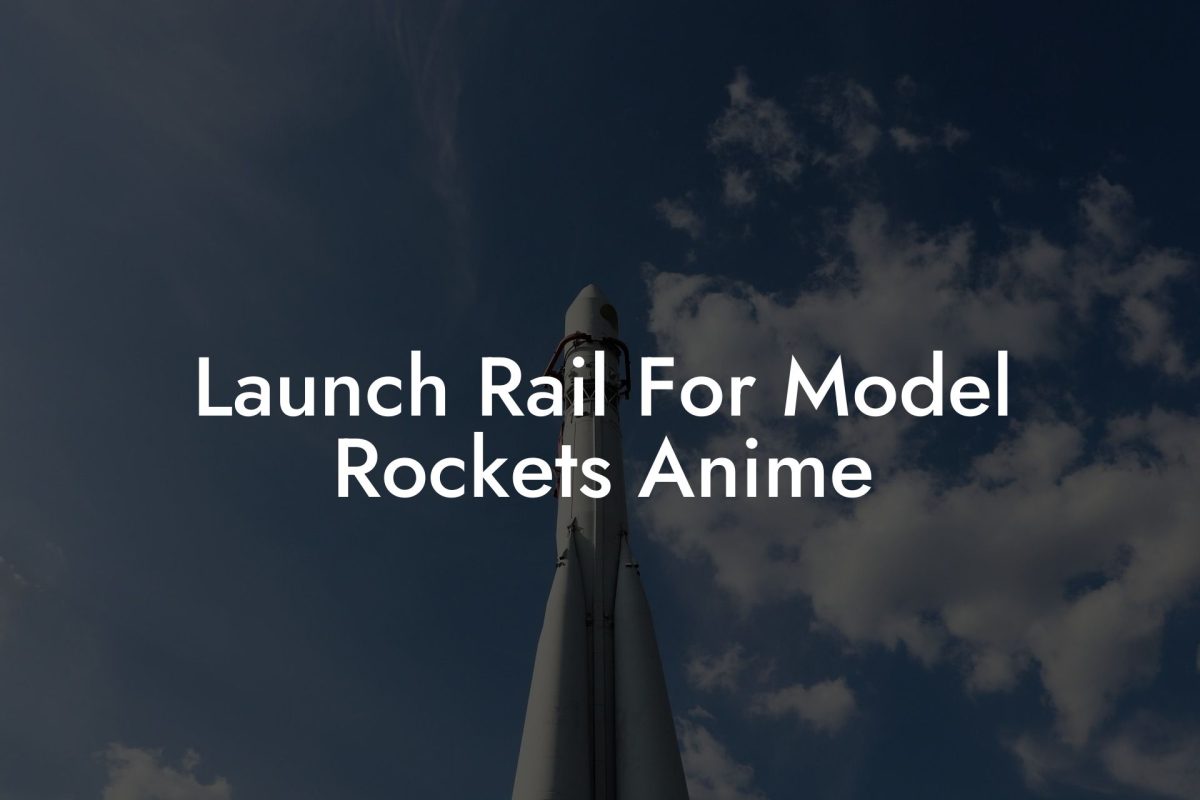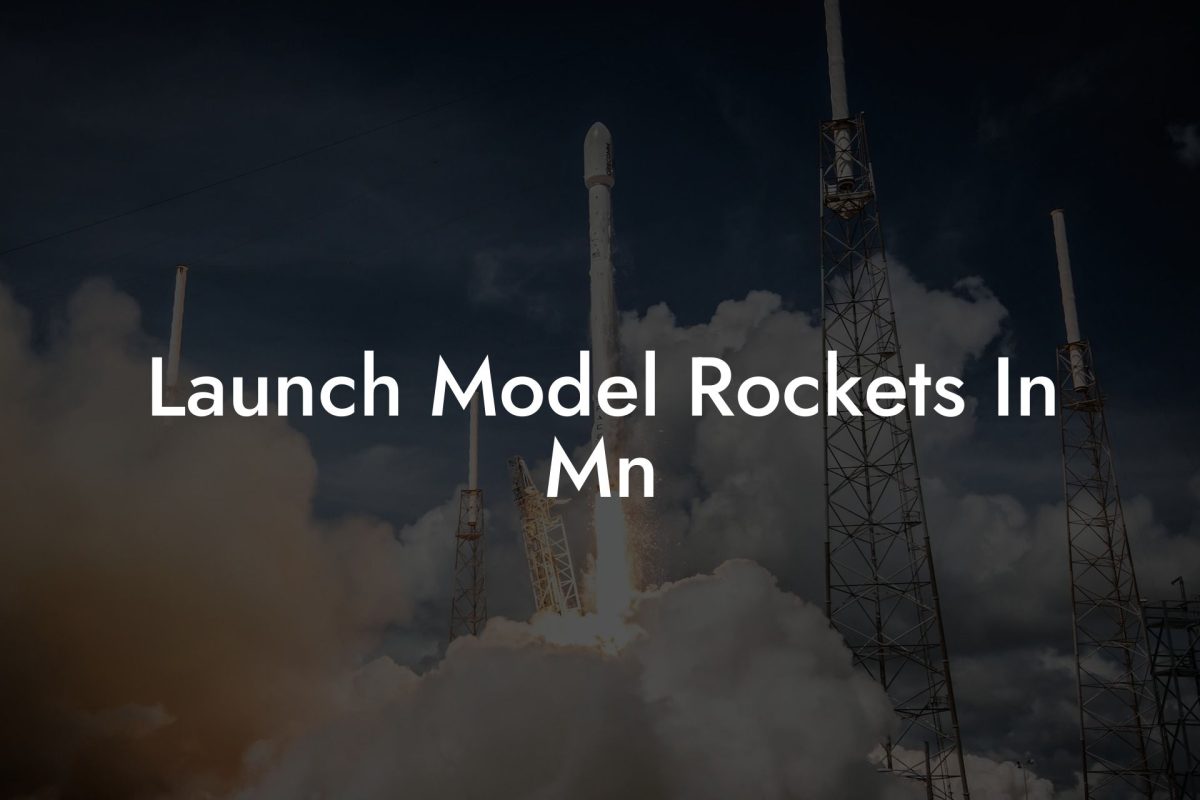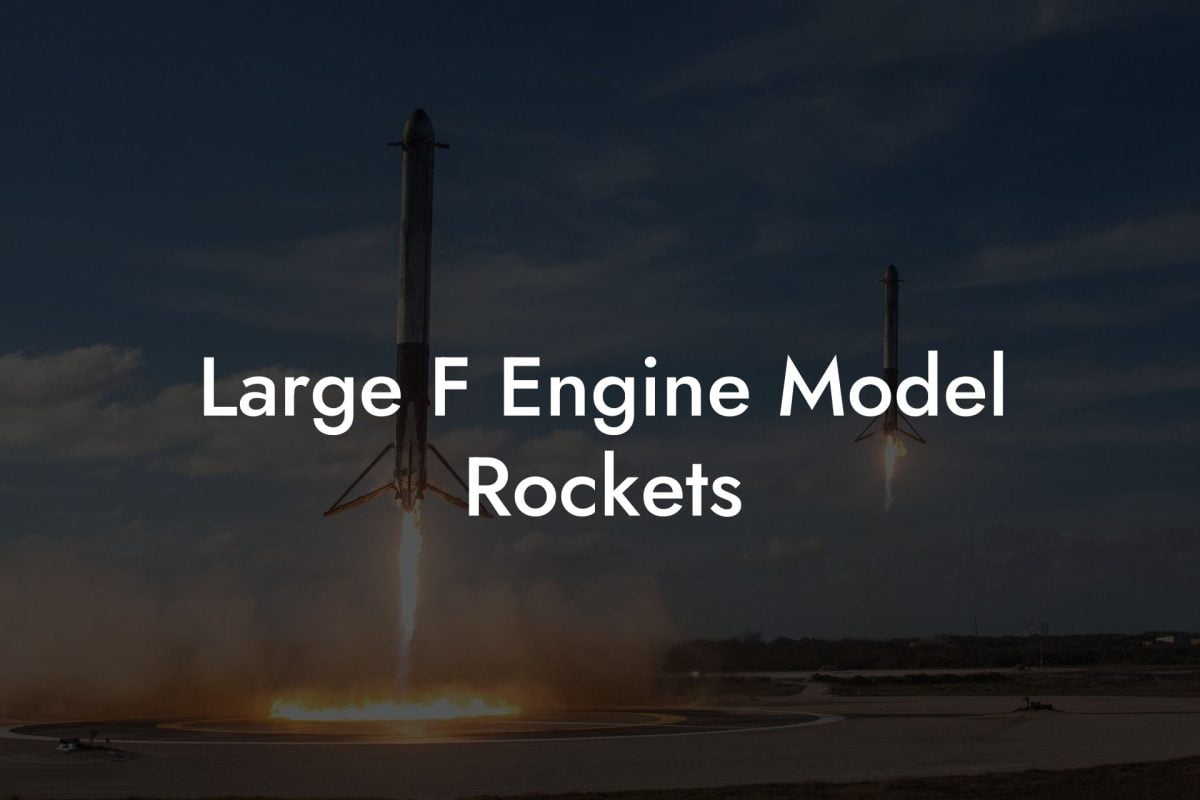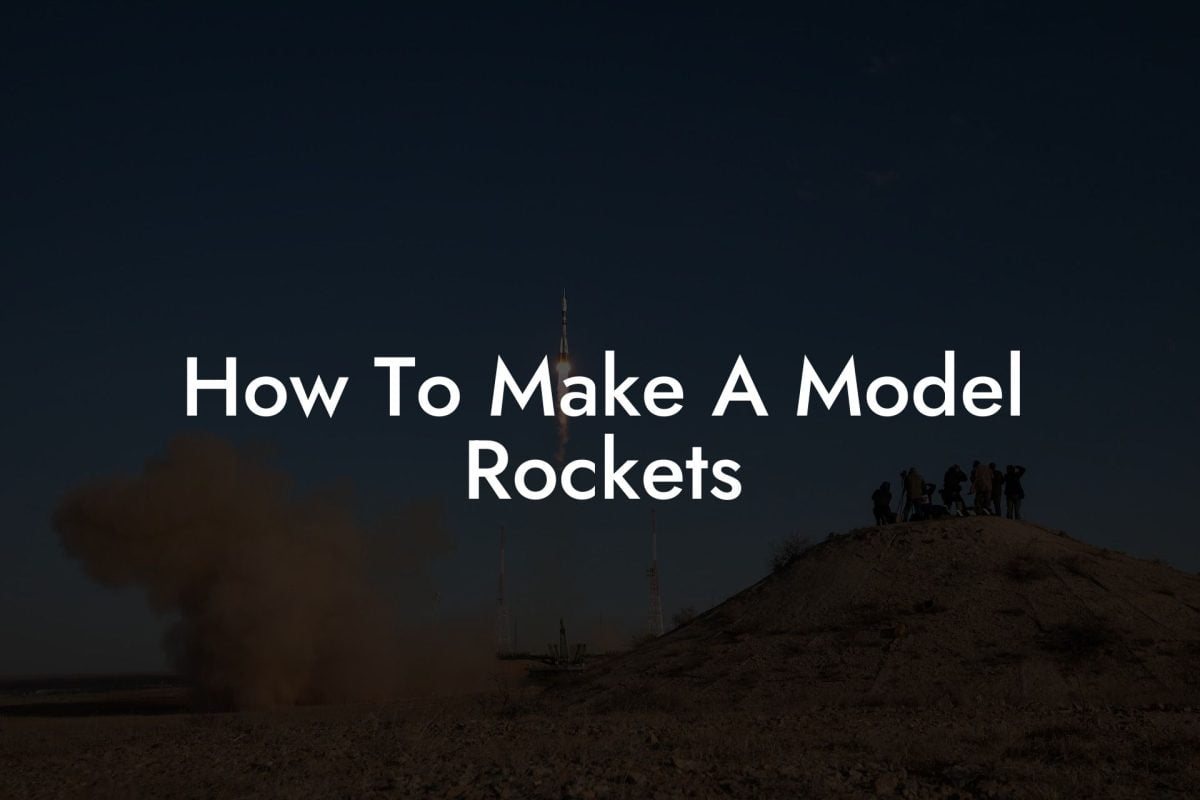Imagine a world where the thrill of space exploration meets the excitement of DIY creativity. Welcome to the universe of multiple engine model rockets, where the boundaries of innovation and experimentation know no limits. Whether you're a seasoned rocketeer or just starting your journey, this comprehensive guide will propel you into the stratosphere of model rocketry, covering everything from the basics to advanced techniques and expert tips.
Quick Links to Useful Sections
- What Are Multiple Engine Model Rockets?
- The Benefits of Multiple Engine Model Rockets
- Types of Multiple Engine Model Rockets
- Clustered Engines:
- Staged Engines:
- Parallel Engines:
- Designing and Building Multiple Engine Model Rockets
- Choose the Right Materials:
- Design for Stability and Control:
- Plan for Recovery:
- Tips and Tricks for Flying Multiple Engine Model Rockets
- Choose the Right Launch Site:
- Check the Weather:
- Use the Right Propellant:
- Resources and community Support: Your Next Steps
- Frequently Asked Questions: Multiple Engine Model Rockets
What Are Multiple Engine Model Rockets?
Multiple engine model rockets are a type of model rocket that uses two or more engines to generate thrust. This design allows for greater flexibility, power, and customization, making them a popular choice among enthusiasts and competitors alike. By combining multiple engines, you can achieve higher altitudes, faster speeds, and more complex flight patterns, taking your model rocketry experience to new heights.
With multiple engine model rockets, the possibilities are endless. You can experiment with different engine configurations, try out new recovery systems, and push the limits of aerodynamics. Whether you're building for speed, altitude, or style, multiple engine model rockets offer the ultimate platform for creative expression and innovation.
The Benefits of Multiple Engine Model Rockets
So, why choose multiple engine model rockets over their single-engine counterparts? The benefits are numerous:
- Increased Power and Speed: With multiple engines, you can generate more thrust, resulting in faster acceleration and higher top speeds.
- Improved Stability and Control: Multiple engines can provide greater stability and control during flight, making it easier to navigate and recover your rocket.
- Enhanced Customization: By combining different engines and configurations, you can create a truly unique model rocket that reflects your personality and style.
- Competitive Advantage: In competitions, multiple engine model rockets can give you an edge over single-engine models, allowing you to reach higher altitudes and achieve faster times.
Whether you're a casual hobbyist or a serious competitor, multiple engine model rockets offer a world of possibilities and opportunities for growth and exploration.
Looking For The Best Model Rocket Kits? You'll Love These:
Types of Multiple Engine Model Rockets
There are several types of multiple engine model rockets, each with its own unique characteristics and advantages:
Clustered Engines:
Clustered engines involve grouping multiple engines together in a single compartment. This design provides a significant boost in power and speed, making it ideal for high-performance model rockets.
Staged Engines:
Staged engines involve using multiple engines in a sequential manner, with each engine firing in a specific order. This design allows for more efficient fuel consumption and can achieve higher altitudes.
Parallel Engines:
Parallel engines involve using multiple engines that fire simultaneously, providing a significant increase in thrust and power. This design is ideal for model rockets that require high acceleration and speed.
Each type of multiple engine model rocket offers its own unique advantages and challenges, allowing you to experiment and find the perfect configuration for your needs.
Designing and Building Multiple Engine Model Rockets
Building a multiple engine model rocket requires careful planning, precision, and attention to detail. Here are some expert tips to get you started:
Choose the Right Materials:
Select materials that are strong, lightweight, and durable, such as balsa wood, fiberglass, or carbon fiber. Avoid using materials that are prone to warping or cracking.
Design for Stability and Control:
Ensure that your model rocket is stable and controllable by using fins, vanes, or other stabilizing features. This will help you achieve a smooth, consistent flight.
Plan for Recovery:
Design a reliable recovery system that can withstand the stresses of launch and recovery. This may include parachutes, streamers, or other recovery devices.
By following these expert tips and guidelines, you can create a multiple engine model rocket that is both functional and visually stunning.
Tips and Tricks for Flying Multiple Engine Model Rockets
Flying a multiple engine model rocket requires skill, patience, and practice. Here are some expert tips to help you get the most out of your model rocket:
Choose the Right Launch Site:
Select a launch site that is safe, open, and free from obstacles. Ensure that you have permission to launch and follow all local regulations.
Check the Weather:
Always check the weather forecast before launching your model rocket. Avoid launching in strong winds, heavy rain, or extreme temperatures.
Use the Right Propellant:
Choose a propellant that is suitable for your engine and model rocket. Ensure that you follow all safety guidelines and precautions when handling propellants.
By following these expert tips and guidelines, you can ensure a safe and successful launch, and get the most out of your multiple engine model rocket.
Resources and community Support: Your Next Steps
Join a community of like-minded enthusiasts and take your model rocketry skills to the next level:
- Model Rocketry Forums: Join online forums and discussion groups to connect with other model rocket enthusiasts, share tips and advice, and learn from experts.
- Local Model Rocket Clubs: Find local model rocket clubs and organizations in your area, where you can meet other enthusiasts, attend launches, and participate in competitions.
- Model Rocketry Events: Attend model rocketry events, competitions, and launches to see the latest designs, learn from experts, and showcase your own creations.
By connecting with other enthusiasts and staying up-to-date with the latest trends and techniques, you can continue to grow and evolve as a model rocketeer.
Frequently Asked Questions: Multiple Engine Model Rockets
Here are some frequently asked questions about multiple engine model rockets:
1. What is the advantage of using multiple engines?
Multiple engines provide greater power, speed, and stability, allowing for more complex flight patterns and higher altitudes.
2. How do I choose the right engines for my model rocket?
Select engines that are compatible with your model rocket's design and materials, and ensure that they are suitable for the desired flight pattern and altitude.
3. What safety precautions should I take when launching a multiple engine model rocket?
Always follow safety guidelines and precautions when launching a model rocket, including wearing protective gear, ensuring a safe launch site, and following local regulations.
4. How do I recover my model rocket after launch?
Design a reliable recovery system that can withstand the stresses of launch and recovery, and ensure that you have a plan in place for retrieving your model rocket.
Looking For The Best Model Rocket Kits? You'll Love These:
Useful Interruption: Dive deeper into the world of Model Rockets with our most popular sections. If there is anything you think is missing or anything you would love for us to write about, just give us a shout.
- Getting Started & Basics With Model Rockets
- Model Rocket Design, Build & Customization
- Model Rocket Propulsion & Engine Technology
- Model Rocket Launch Techniques & Recovery
- Model Rocket Advanced Rocketry & Innovations
- Model Rocket DIY and Customization
- Model Rocket Equipment Reviews & Digital Tools
- Community, Competitions & Education
- Model Rocket Troubleshooting & FAQs
- Model Rocket Bonus/Seasonal & Niche Topics
A group of model rocket enthusiasts gathered at a field for their weekly launch event. Among them was Dave, a seasoned builder known for pushing the limits of hobby rocketry. This time, he had outdone himself.
“Ladies and gentlemen,” Dave announced, dramatically pulling a cloth off his latest creation, “I present to you: The Kraken!”
The crowd gasped. This wasn’t just a model rocket, it was a monster. The thing stood 8 feet tall, had six clustered engines, and was covered in enough duct tape to qualify as a classified aerospace project.
“Dave,” muttered Steve, the cautious safety officer, “Have you, uh… done the math on this?”
“Math?” Dave scoffed. “I built it in my garage at 3 a.m. with parts from eBay. This is an art piece, Steve.”
The countdown began.
5…
4…
3…
2…
1…
The engines ignited with a BOOM, and The Kraken shot up… kind of. It immediately did a violent barrel roll, narrowly missing the spectators before skyrocketing at an angle that could only be described as “legally questionable.”
The crowd collectively ducked as The Kraken flew straight over the adjacent cornfield, where Old Man Jenkins, the grumpiest farmer in town, was minding his business.
KABOOM!
The rocket disappeared behind the barn. A moment later, a flaming piece of Estes igniter wire landed at Steve’s feet. The silence was deafening.
And then, an unmistakable sound echoed across the field.
Jenkins’ shotgun being cocked.
“DAVE!!!” Steve shouted. “RUN.”
And that was the day Dave invented the first-ever biologically powered rocket booster: pure adrenaline.
To this day, nobody knows where The Kraken landed, but legend has it, it still haunts the skies, terrifying unsuspecting drones and low-flying birds.

